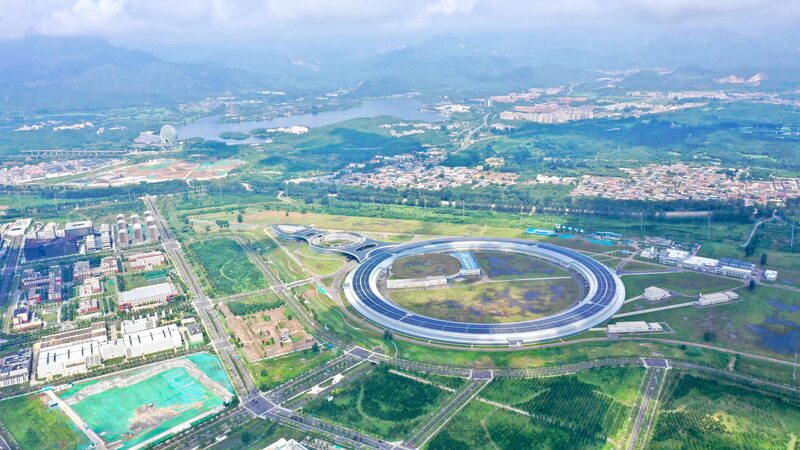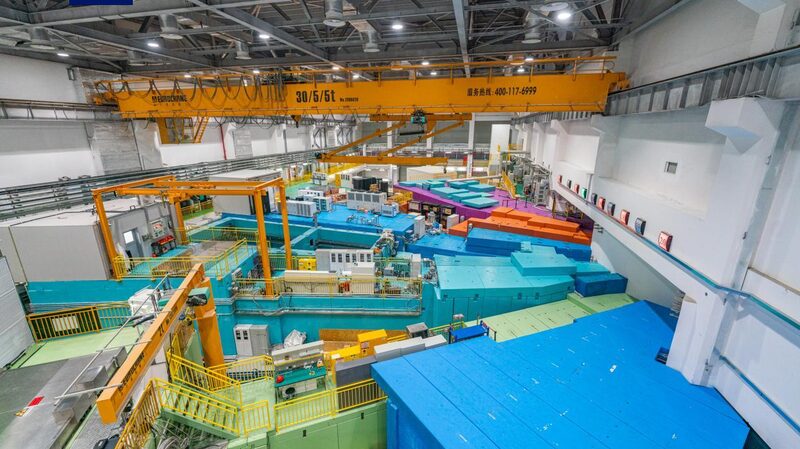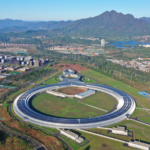China has announced significant progress in the construction of its High Energy Photon Source (HEPS), marking a major milestone in the development of the country’s first high-energy synchrotron radiation light source.
On Monday, the Institute of High Energy Physics (IHEP) under the Chinese Academy of Sciences revealed that electron beams with currents reaching 12 mA have been successfully stored in the HEPS storage ring, located in Beijing’s suburban Huairou District.
HEPS is one of China’s key scientific and technological infrastructure projects. Upon completion, it is expected to become one of the brightest fourth-generation synchrotron radiation facilities worldwide, serving as a cutting-edge research platform for fields such as material science, chemical engineering, and biomedicine.
The construction of HEPS began on June 29, 2019. The facility comprises several components, including accelerators, beamlines, end stations, and support facilities. A synchrotron radiation light source is an electromagnetic radiation source typically produced by a storage ring, where electrons are accelerated to near the speed of light and forced to travel in a closed path to generate extremely bright light.
The electron storage ring, with a circumference of 1,360.4 meters, is the main component of the HEPS accelerator complex. It is one of the largest synchrotron light source accelerators globally and the largest in China. Its primary function is to store high-energy, high-quality electron beams and generate high-performance synchrotron radiation, according to Pan Weimin, the HEPS project director.
Commissioning of the storage ring began on July 23. The ring consists of 1,776 magnets, over 2,500 power supplies, and 578 electron beam position monitors, with more than 100,000 control signals. “Any small hardware error could affect the trajectory of the electron beam, which is undoubtedly a huge challenge for the commissioning of the storage ring,” said Pan.
According to Jiao Yi, deputy head of the HEPS accelerator division, commissioning of the storage ring will continue over the next few months with the goal of achieving higher beam currents and a sufficiently long beam lifetime for vacuum conditioning and beamline commissioning.
The HEPS project is expected to be ready for operation by the end of 2025. Once completed, HEPS will be capable of emitting light that is one trillion times brighter than the sun. It will be open to users in various fields, including aerospace, energy, environment, life science, and pharmaceuticals, as stated by IHEP.
Reference(s):
China achieves new progress in building High Energy Photon Source
cgtn.com






